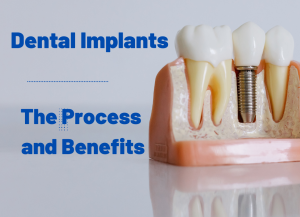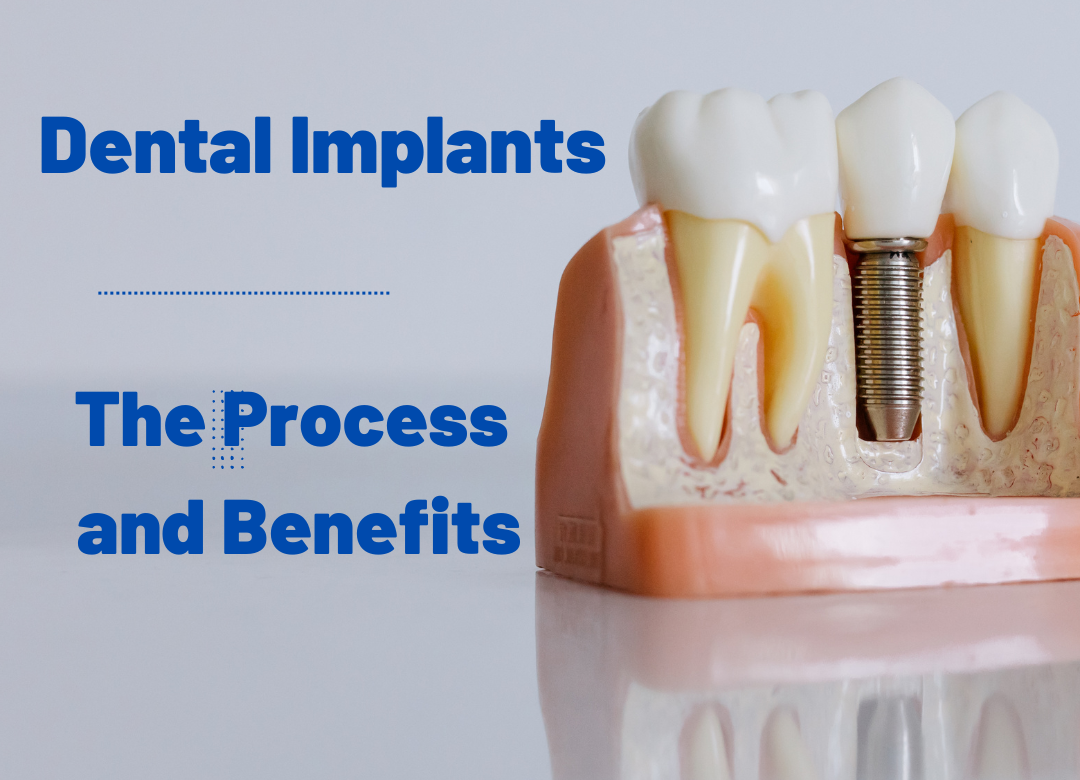Dental Implants – The Process and Benefits
Dental implants have revolutionized the way we can restore missing teeth in modern dental practice. Implants are a safe and effective solution for those who suffer from tooth loss, decay, or dental trauma. They can replace one or several teeth that have been lost due to various reasons. There are different types of dental implants and the appropriate choice is made according to the situation and the needs of the patient. Many dental professionals attest to the fact that they have seen the positive impact of implants on patients, from improved appearance to enhanced chewing ability.
What Are Dental Implants?
Dental implants are constructed using three main components: the implant body, abutment, and crown. The implant body is a small post made of biocompatible materials such as titanium, which acts as a prosthetic root and is placed into the jawbone. The abutment is connected to the implant body and forms a connection between the implant and the crown. The crown is the visible part of the implant, resembling a natural tooth, and is mainly made of porcelain or ceramic material.

Types of Dental Implants
A – Endosteal Implants
Endosteal implants are the most commonly used type of implant. They are shaped like screws or cylinders and are surgically placed into the jawbone, after which the abutment and crown are attached. Endosteal implants are preferred if the patient has enough bone density and volume to support the implant.
B – Subperiosteal Implants
Subperiosteal implants are less commonly used than endosteal implants. Unlike endosteal implants, subperiosteal implants are placed on top of the jawbone, beneath the gum. A metal frame is attached to the jawbone, and a post is attached to the frame, extending above the gums. Finally, the crown is mounted on the post.
Dental Implants Consultation
Before dental implants are recommended, a thorough consultation is conducted to assess the patient’s overall health condition, oral health status, and bone condition. If the patient has adequate bone density, the implant placement process can begin. However, if the bone density is low, a bone graft may be needed to augment the jawbone. The dentist may also use 3D imaging techniques to create a detailed blueprint of implant placement.
The Dental Implants Procedure
Dental implant procedures typically require multiple dental visits. The first visit often involves radiographs and study models to determine the best course of treatment. The second visit involves the oral surgeon making an incision into the gum tissue and creating a pilot hole in the jawbone for the implant to be placed. After the implant is placed, the gum tissue is stitched closed to promote proper healing. The placement and healing process typically takes anywhere from 3 to 6 months.
Once the healing process is complete, a connector called an abutment is attached to the implant. The abutment serves as an attachment point for the crown. Impressions of the teeth are then taken and the crown is created. Finally, the crown is cemented over the abutment, and the implant process is completed.
Benefits of Dental Implants
- Improved Appearance: Dental implants are made to match the shape, size, and color of your teeth and provide a natural-looking appearance. Implants look and feel like natural teeth, enhancing the overall appearance of the face by filling gaps caused by missing teeth.
- Enhanced Chewing Ability: Implants function like natural teeth. With implant-supported tooth replacements, patients can have their previous chewing ability restored and improved.
- Increased Speech Clarity: Speech clarity can be impacted by missing teeth and gaps. Implants fill gaps and restore the normal speech pattern and clarity.
- Improved Durability: Dental implants are a long-term solution because they can last for over 30 years with proper care. Additionally, implants provide enough stability and support to the replacement teeth, preventing further damage. As long as patients maintain good oral hygiene, their implants can last a lifetime.
Dental Implants Case Studies
Case Study 1
A 60-year-old man, Mr. J, came to our clinic with missing teeth in his upper jaw. He wanted to improve his teeth’ appearance to restore his self-confidence. The initial oral examination revealed that Mr. J had previously lost the bone in his jawbone as a result of gum disease. After discussing the various options, we recommended that Mr. J undergo bone-grafting surgery to increase the jawbone’s thickness and density.
After a few months, the bone graft took, and dental implants were placed in the upper jaw, after which we placed a removable denture. The implants enhanced the denture’s stability and improved Mr. J’s bite dramatically. After the final impression was taken and the final crown fitted, Mr. J was thrilled with the natural look and comfortable feel of his new teeth.
Case Study 2
Mrs. K, a 45-year-old woman, had lost her two upper front teeth due to a car accident. She expressed her desire to replace the missing teeth with a more permanent option that wouldn’t have to be removed daily. After examining her teeth, we decided she was a good candidate for implants.
The implants were placed, and after a healing period, abutments were attached to the implants. A porcelain bridge with the exact appearance of natural teeth was customized and fitted onto the abutments, restoring Mrs. K’s natural smile. She was thrilled with the final outcome and the natural look of the restorative work.
Concluding Thoughts on Dental Implants
Dental implants are a proven solution to replacing damaged or missing teeth, providing natural-looking replacements that are comfortable and stable. Not only do they look and feel natural, but they also improve oral health by preventing bone loss and decay. Implants restore the patient’s chewing ability, stabilize the surrounding teeth, and boost confidence.
It is essential to consult with dental professionals to determine if implants would be the best solution and create a detailed treatment plan to achieve a successful outcome. Dental implants restore one’s quality of life by providing the confidence to smile and eat without limitation. With the benefits of dental implants in mind, you can trust that this investment in your oral health will pay off for years to come, leaving you with a bright and confident smile.









